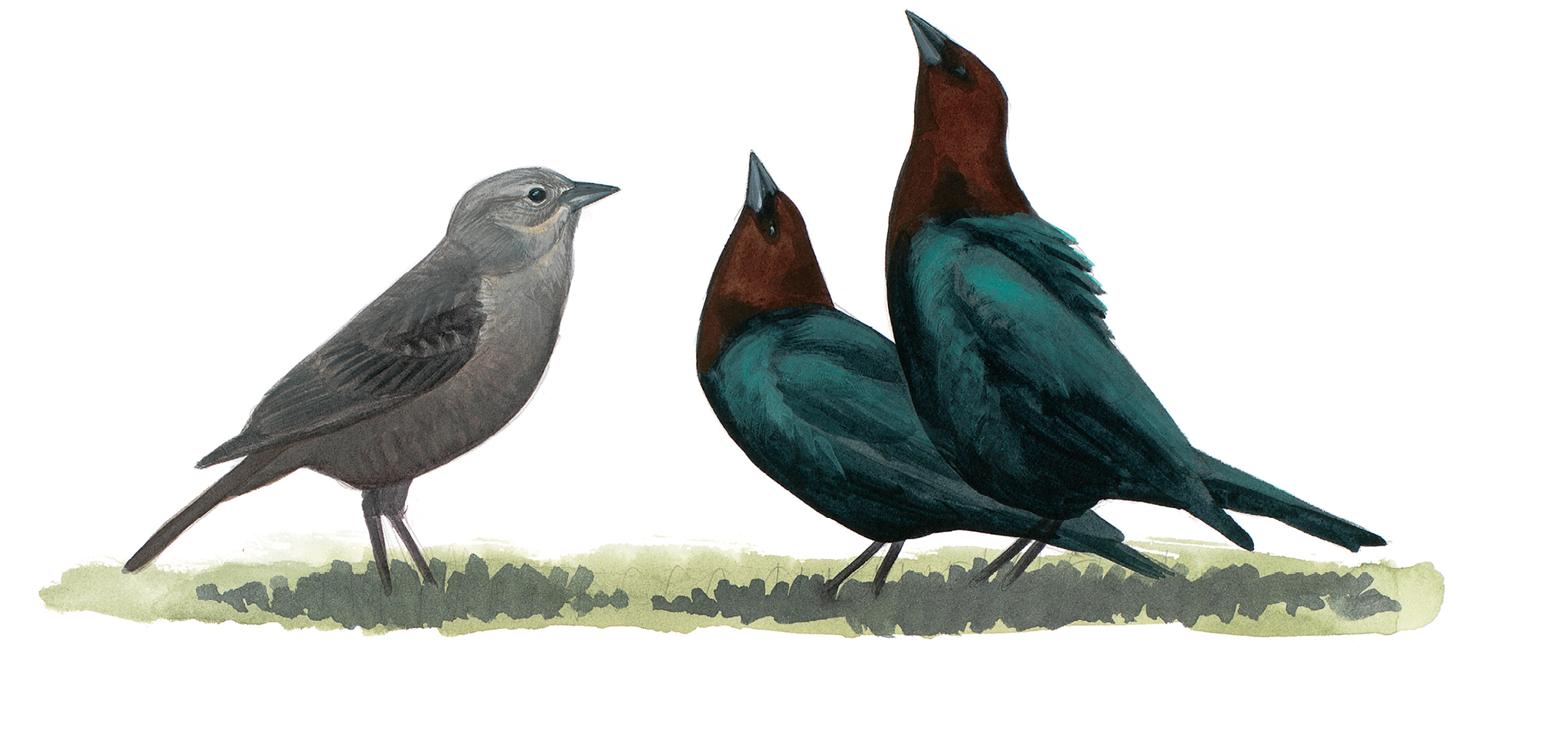Cowbirds
A male Common Yellowthroat raising a Brown-headed Cowbird fledgling
Brown-headed Cowbirds use a nesting strategy called brood parasitism. They lay their eggs in other birds’ nests, and the unwitting foster parents do all of the work of incubating and feeding the young cowbird.
■ Cowbirds don’t build nests or raise young, and they have weakly defined territories. Females may be courted by multiple males, and it’s common to see a single female cowbird being followed closely in flight by several males vying for her attention. In some populations, the female forms a strong pair bond with one male and that pair stays together through the breeding season, while in other populations no significant pair bonds form. The female searches her territory for nests of other species where she can lay an egg, and monitors those nests to determine the best time for adding her egg. She lays one egg in each suitable nest, and can lay dozens of eggs in a season. Most egg laying occurs in the morning, which is when most courtship behavior occurs, and in the afternoon the cowbirds relax.
A female Brown-headed Cowbird (left) being courted by two males
■ Female cowbirds do not simply lay an egg and leave it; they actually monitor the progress of the egg and the young. If the cowbird finds that her egg has been removed by the host species, she often retaliates by destroying all of the eggs of the host. This slows the spread of anti-cowbird behavior by preventing those birds from reproducing, as well as potentially giving the cowbird another chance to add an egg if the host re-nests. Research suggests that female cowbirds remain in their territory until well after their young have hatched, and that baby cowbirds as young as six days old respond to the characteristic rattle call of female cowbirds. Baby cowbirds have to avoid imprinting (see this page) on their foster parents, and the rattle call of the female cowbird may function as a kind of instinctive password that helps cowbirds recognize their own species after they fledge.
A female Brown-headed Cowbird at a nest
■ Cowbird eggs take fewer days to hatch than other species, so as long as a cowbird egg is added to a clutch before incubation has started, it will hatch before the host’s eggs. The young cowbird either pushes the unhatched eggs out of the nest or, being larger and stronger, simply outcompetes the host chicks for food. If a female cowbird finds a nest where incubation has already begun, she may remove those eggs from the nest, presumably as a way to get the host to begin laying a new clutch where the cowbird can sneak in an egg.
A Common Yellowthroat nest with one (larger and more densely spotted) Brown-headed Cowbird egg



